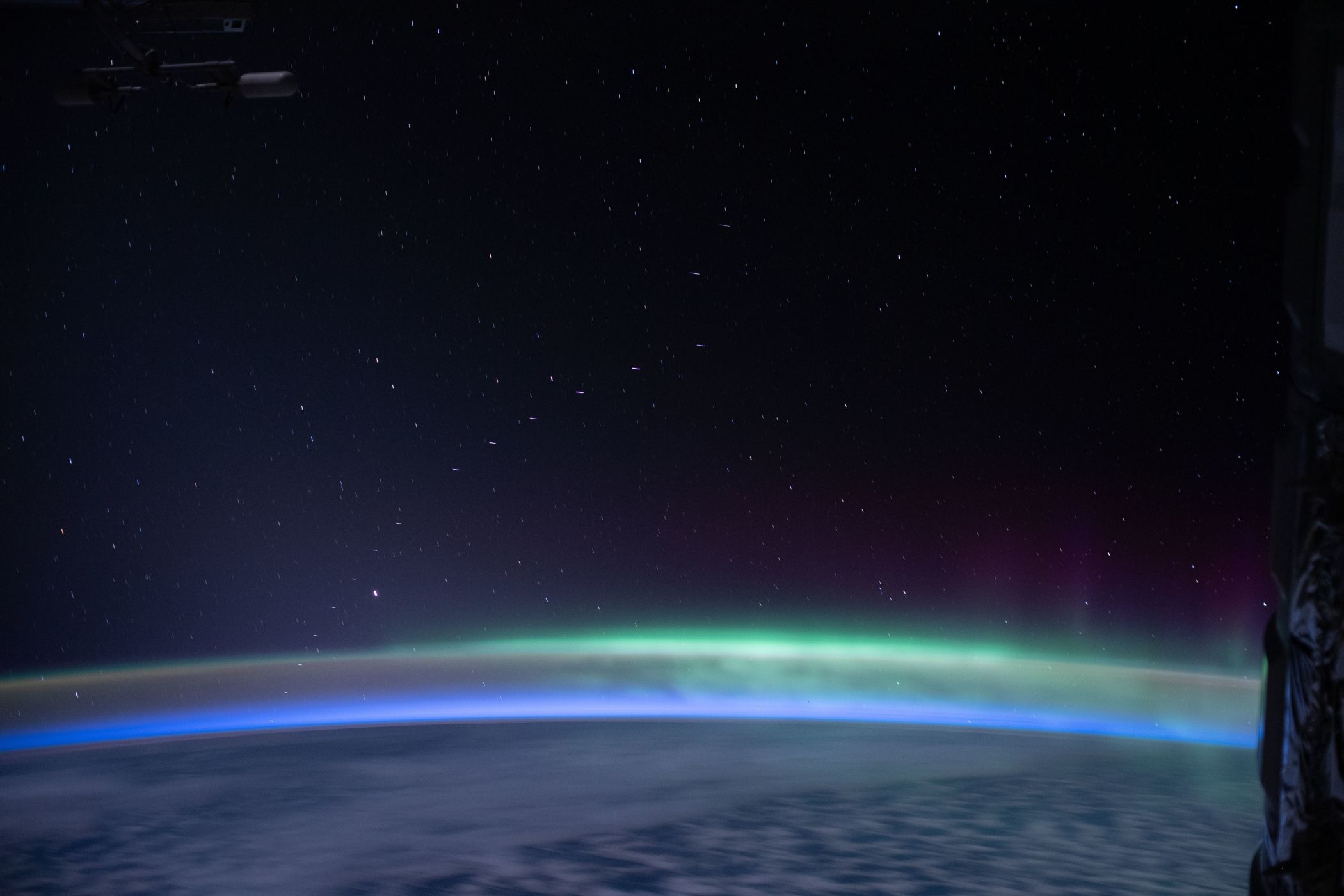SpaceX has a plan to send 42,000 satellites into space to develop the Starlink constellation, with the goal of global internet coverage. Elon Musk's company has launched shipments of 60 satellites at a pace of three weeks, adding up to 360 units orbiting the Earth. Despite having all the necessary authorizations, the impact of satellites in the sky has been the subject of controversy among the scientific community of astronomy, due to the visual pollution it is causing in space observation.
Starlink satellites have been observed and photographed around the world by astronomers, and for the first time, astronauts on board the International Space Station shared one of the passages of these SpaceX equipment, as you can see in the photo below.

As explained, the ISS was flying over the southern Indian Ocean when the observation took place. The chambers of the station were pointed to the south, in the direction Antrtica. That was when there was a breeze of solar wind against the Earth's magnetic field, generating auroras projected on the frozen continent. It was in this scenario that, literally, the satellite train passed over the dawn layer, being recorded in the photograph. A Dutch satellite expert used the image released by NASA and captioned the names of the satellites, identifying them as part of the fourth launch, on February 17 this year, as he mentions on his blog.
European Southern Observatory (ESO) astronomers have again alerted Elon Musk to the consequences of the Starlink project. The magnate believes the constellation will have no impact on astronomy, but scientists say satellites can interfere with terrestrial telescopes at dawn and dusk, when they are still reflecting sunlight. Elon Musk has already shown a willingness to cooperate with the scientific community to find solutions, having arranged a meeting with the researchers.
In the past few months, the observations of several astronomers have been invaded by the satellite train. One example was Scott Tucker, from Tucson, Arizona, who was photographing Venus at dawn last Friday, April 17, when he captured the latest group sent to the Starlink constellation.
In the gallery you can see photographs of satellites captured invading space landscapes during the observations of different astronomers and astronomy enthusiasts.
